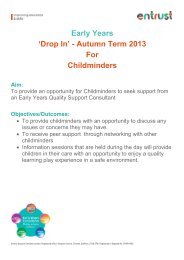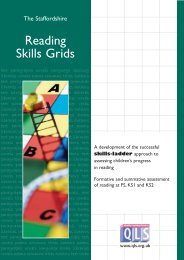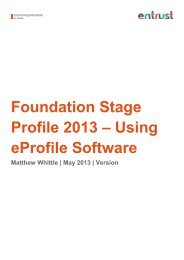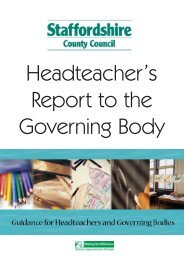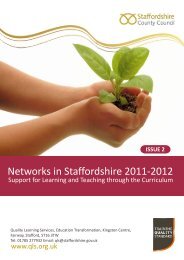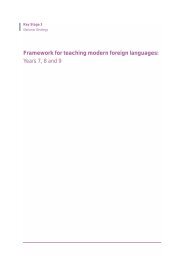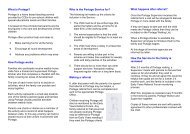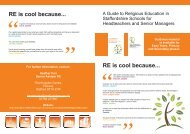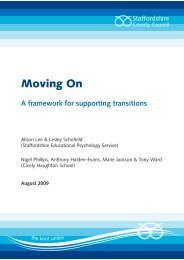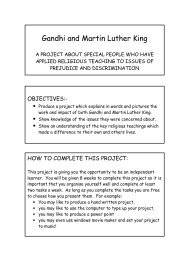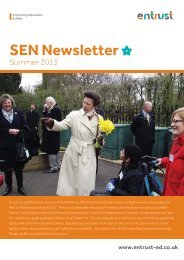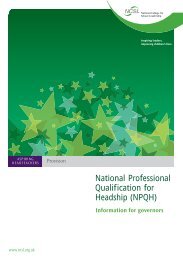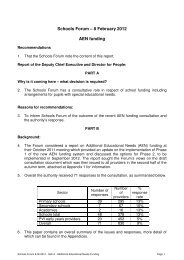KS2 Framework for Languages - Staffordshire Learning Net
KS2 Framework for Languages - Staffordshire Learning Net
KS2 Framework for Languages - Staffordshire Learning Net
Create successful ePaper yourself
Turn your PDF publications into a flip-book with our unique Google optimized e-Paper software.
Knowledge About Language<br />
When learning a new language, children rein<strong>for</strong>ce and reinterpret knowledge and<br />
understanding gained in learning their first language(s). They develop insights into the nature<br />
of language and its social and cultural value. Building on their experience of interaction with<br />
and in the new language, they begin to increase their understanding of how language works.<br />
They compare the new language with English or another language and reflect on similarities<br />
and differences. They become aware of rules or patterns in language and begin to apply their<br />
knowledge when creating new language.<br />
Knowledge about language supports children in communicating effectively in speech and<br />
writing. It helps them to apply their prior knowledge, both to understand and to generate<br />
new language. It makes them aware of pronunciation and intonation and how these influence<br />
meaning. It helps them investigate how languages work and illustrates how users adapt<br />
language in <strong>for</strong>mal and in<strong>for</strong>mal contexts.<br />
Language <strong>Learning</strong> Strategies<br />
An important aim of language learning in <strong>KS2</strong> is to familiarise children with strategies which<br />
they can apply to the learning of any language. The <strong>Framework</strong> sets out examples of <strong>Learning</strong><br />
Strategies and ways of teaching them. Over the four years of <strong>KS2</strong> children should have regular<br />
opportunities to identify and apply a range of Language <strong>Learning</strong> Strategies.<br />
By selecting and using different strategies, children develop awareness of how they learn and<br />
the ability to plan to use specific strategies <strong>for</strong> particular tasks. Strategies explored in language<br />
lessons can also be used <strong>for</strong> learning in other subjects.<br />
The objectives show how children can progress over the course of four years. The strands<br />
are interconnected and support each other; they would rarely be taught in isolation. A typical<br />
series of lessons will include elements from three to five strands. Schools should feel free to<br />
emphasise certain strands and certain objectives to fit in with their own aims and teaching<br />
materials. Some children’s learning needs will be better matched by learning objectives from<br />
earlier or later years.<br />
one<br />
The Key Stage 2 <strong>Framework</strong> <strong>for</strong> <strong>Languages</strong> – Introduction<br />
9



